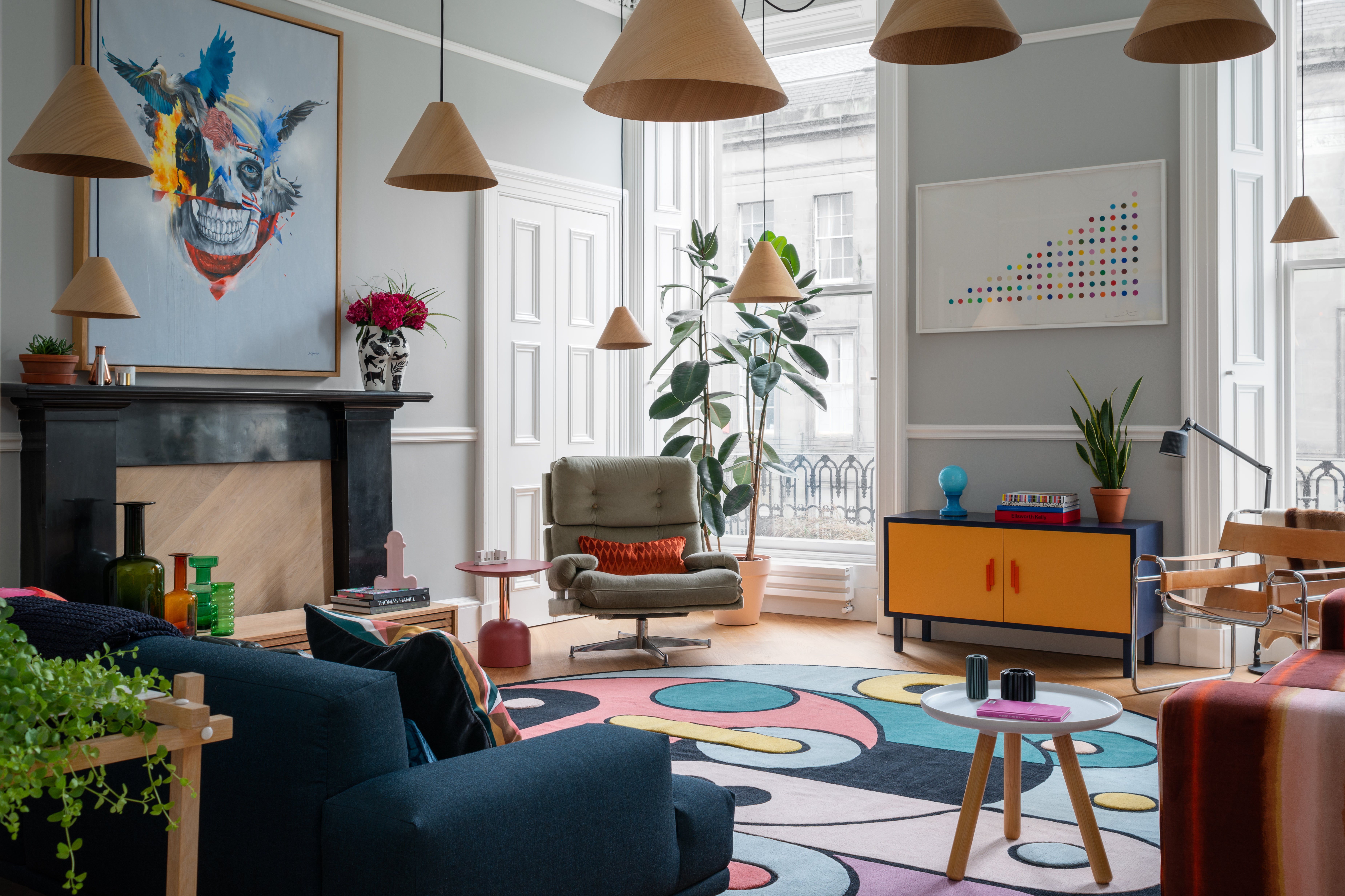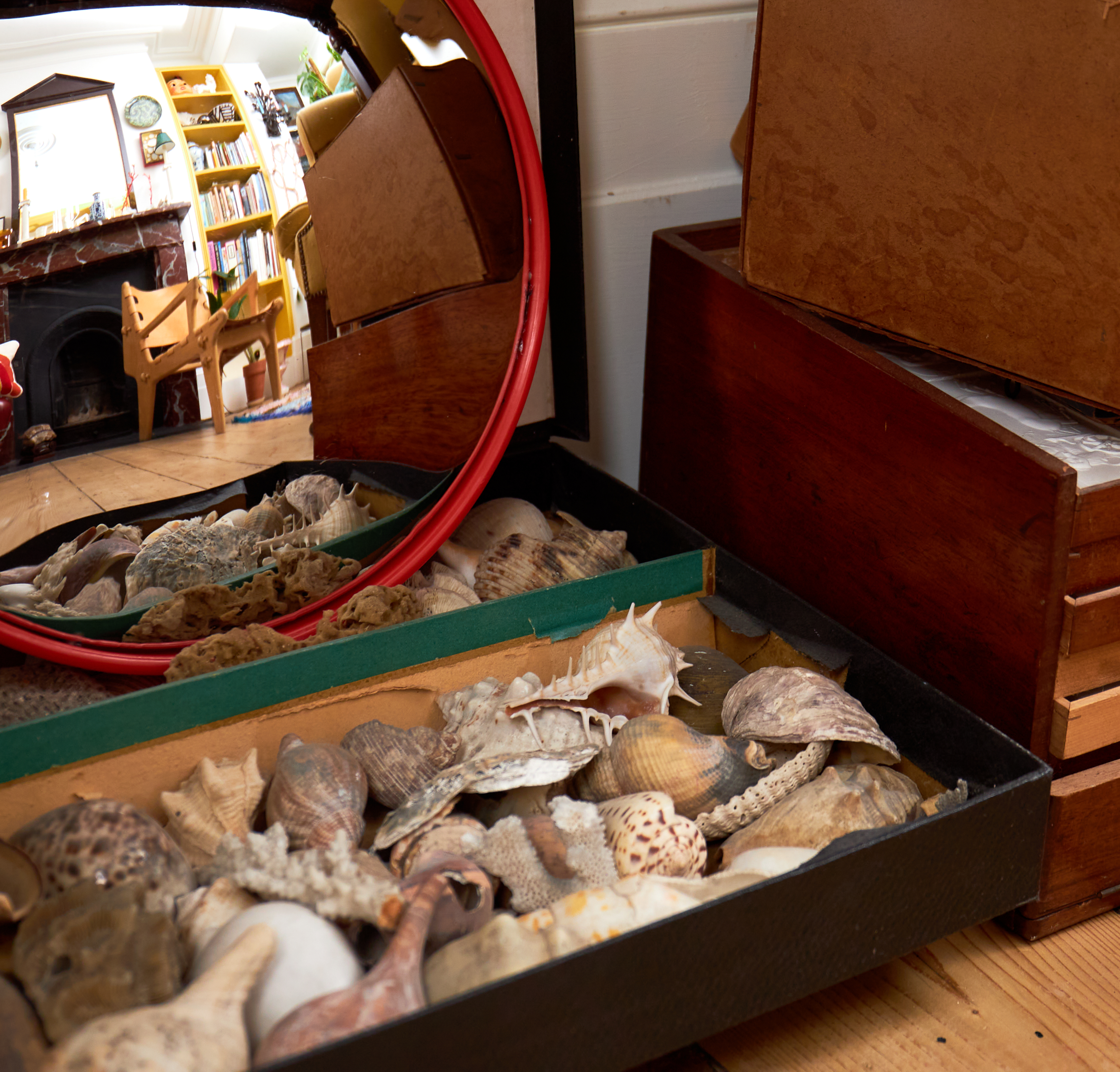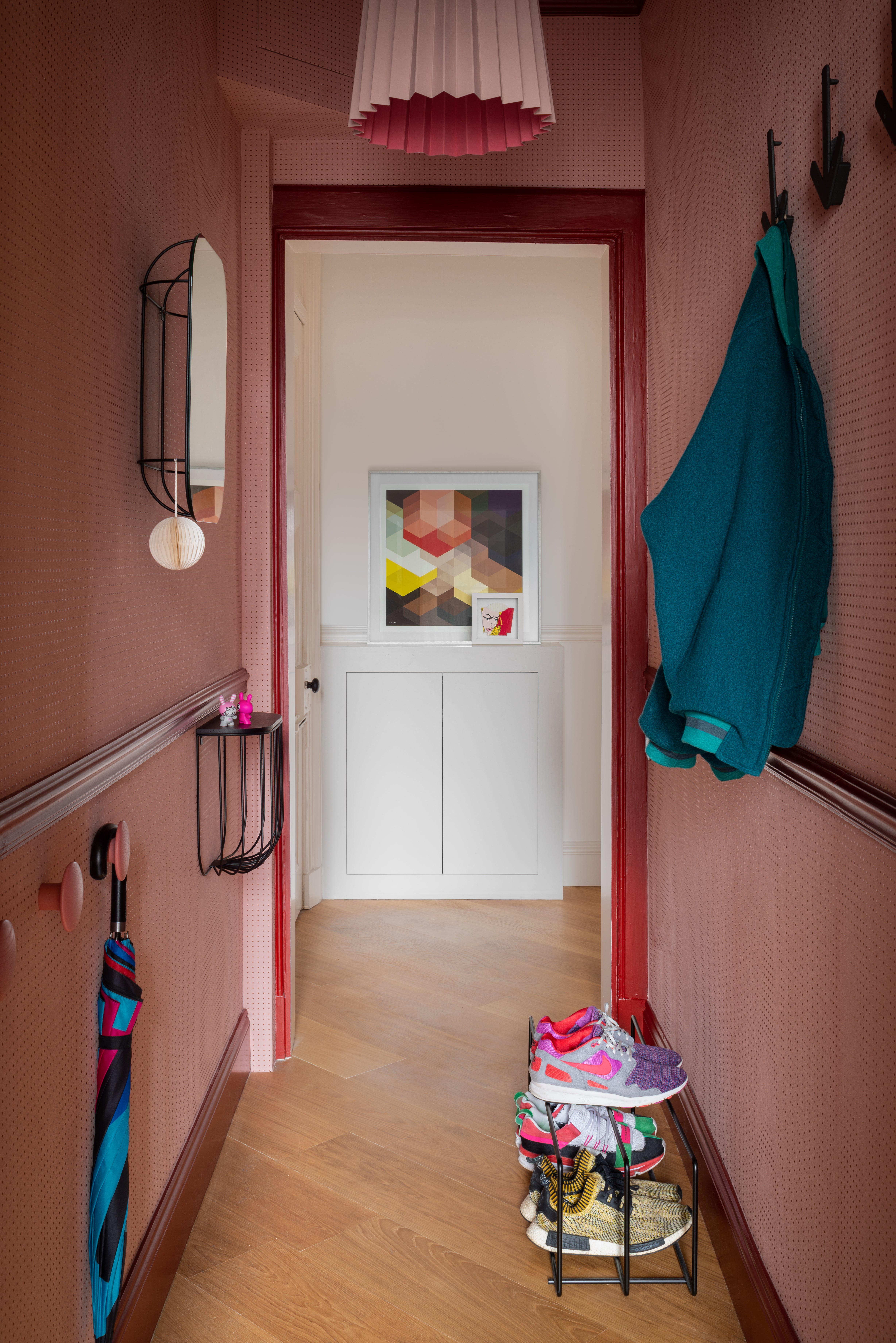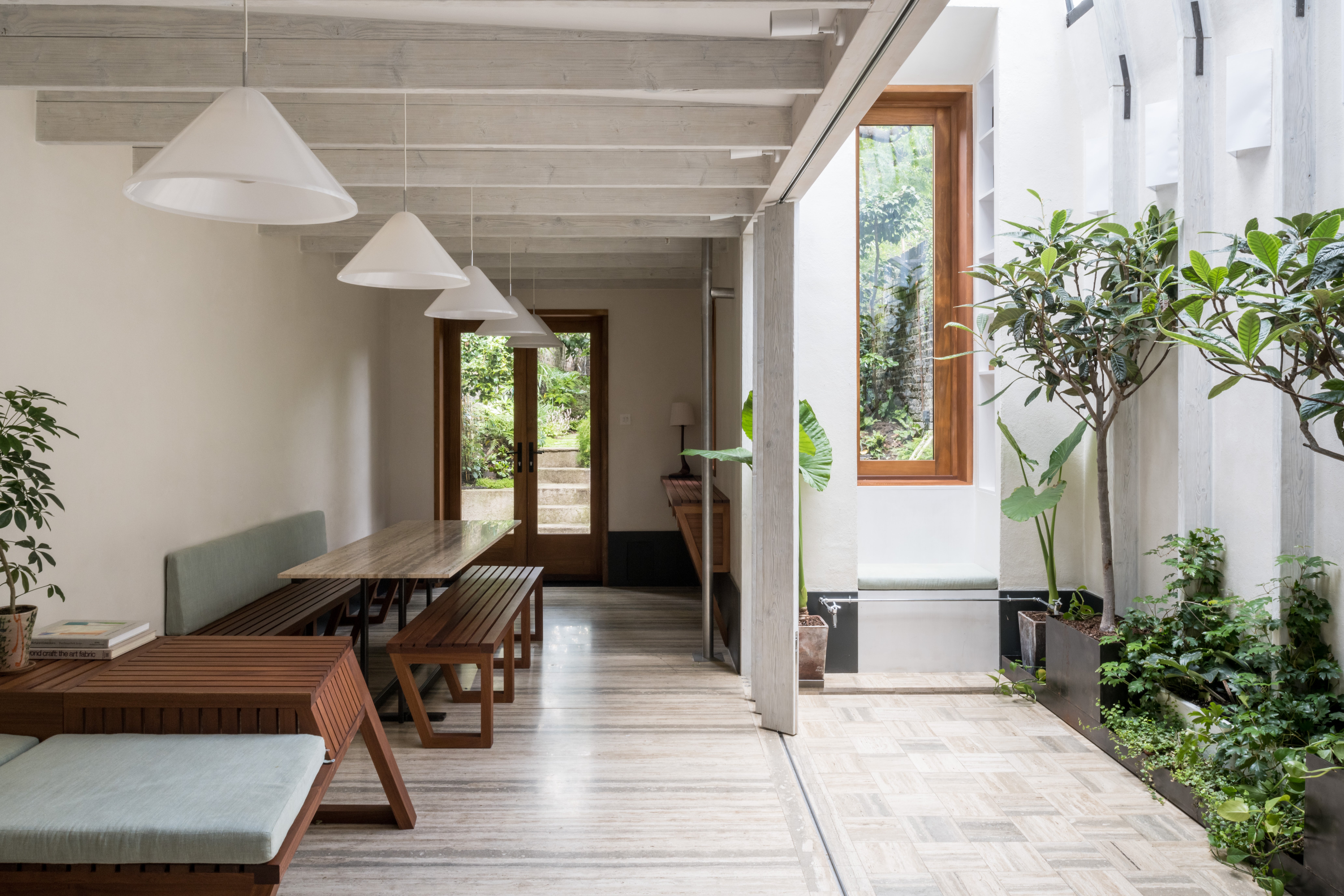My own place: the ‘live-aloners’ embracing the unique design possibilities of the solo space
The boom in solo living in Britain – more than 8 million of us now live alone – means that spaces are finally being designed to prioritise the needs and desires of one person. Goodbye neutral colours, hello bold choices, multi-use rooms and personality, discovers Francesca Specter


When artist Bridie Hall found herself newly single and living alone at the age of 36, she had an interior design epiphany: she didn’t need to compromise for anyone. Out went the aesthetic of the home she’d shared with her former partner of 12 years – “natural grey walls throughout”, with spare rooms for their friends and family (“dead space”, as she describes it) – in came a space designed by, and for, her.
Eight years on, Bridie’s museum-inspired three-bed home in north London is a colourful wonderland. On the red-and-white painted chequerboard kitchen floor, her pet tortoises, Mayhem and Sir David, roam free; there are miscellaneous ceramics from her co-owned homewares store, Pentreath & Hall; and wooden cabinets painted in shades like pear-green and mustard yellow. The two would-be spare rooms have been transformed into, respectively, a dressing room and an artist’s studio. “It’s a space that nurtures me,” she says. “I use every room – and keep all the doors open. Everything is laid out ready for me.”
Like Bridie, I’m one of the UK’s 8.3 million “live-aloners” (predicted to rise to 10.7 million by 2039). Some 25.8 per cent of homes in London – where I live – are single-person households. Yet, designing for one has been a freedom I’ve been slower to realise. Having initially been shared with an ex-partner, my home still bears the telltale marks of a space for two. Like the jilted Miss Havisham – with her decaying wedding cake dominating her dining room – my too-big bed has long been flanked by twin bedside tables and lamps; my cupboards stuffed with matching pairs of crockery and family sets of dinnerware. Unwittingly, I was accommodating for an absent, or future, other half.
This approach isn’t unusual, says Sarah Spencer Ashworth, director of interior company Ashworth Dahle, whose (typically female) solo clients “want a space that could facilitate a potential future partner”. As such, the team keep some flexibility within their designs, “to allow for lifestyle development”. And yet, more recently I’ve been asking another question: what might it look like to design for the lifestyle I have right now, rather than for what the future might look like?
Like Bridie, a growing number of live-aloners are answering this question. According to the latest Life at Home report from the INGKA Group (the owners of IKEA Retail), some 13 per cent of respondents said they consciously choose to live on their own, which – the report speculates – “allow[s] them to prioritise and focus on their personal needs and desires”. On TikTok, the hashtag #livingalone has more than a billion views. Over on Instagram, live-aloners such as John Lewis home-design stylist Wil Law (@johnlewis_wil) and interior designer Charlotte Taylor (@charlottetaylr) accumulate thousands of followers for their unique, solo-living aesthetics. Wil’s is typified by bold primary colours, Charlotte’s by a minimalism which includes innumerate carved wooden objects and a bedroom with almost no furniture except a low, Japanese-style bed. Some dedicate their homes to hobbies: for instance, Charlotte’s two-bedroom Victorian terraced house in Bromley has stacks of sudoku puzzle books in each room.
Then there’s New York fashion designer Jenna Lyons, identified by Spencer Ashworth as the favourite solo living inspiration – whose dark-grey woodwork and bold upholstery choices reportedly inspired Samantha Cameron. There’s interior designer Sam Buckley, whose unique Edinburgh flat, a three-bed in a Victorian mansion block characterised by low-hanging pendant lights and psychedelic artwork, has been featured on design-led estate agent Modern House. (Incidentally, Scotland has the highest proportion of single-person households in the UK, with 36 per cent living alone.)

And there’s the influential Portland-based writer Leslie Stephens – founder of the Morning Person newsletter – who moved into her first house-for-one this September, following divorce. “I wanted to create a home that felt intentional – a curated expression of my style, completely independent from a partnership.” Recent developments include an unapologetically feminine bathroom, complete with a wildflower-print shower curtain and a vase of freshly-cut flowers – “One of the great joys of having my own place has been… to lean into my femininity” – and a growing collection of curated single mugs. Another advertisement for autonomous home design can be found in (my) film of the year, Barbie, in the single-girl paradise of the Barbie Dreamhouse, temporarily transformed into Ken’s Mojo Dojo Casa Dreamhouse. Each is an example of dictatorial design-for-one: Barbie’s all-pink walls, Ken’s equestrian-themed decor.
I loved my old studio flat in Pimlico, where every room was a different colour... now I live with a boy and have white walls
And why the hell not? When I quizzed fellow live-aloners (via social media) about their decor choices, I was inundated with tales of pink kitchens, bathrooms and Smeg fridges; pineapple-wallpapered wardrobe spaces devoted entirely to shoes; and some bold artwork, including a friend who has two nude portraits of herself. Other highlights include a living space inspired by Elvis Presley’s Jungle Room in Graceland (forest green sofas, leopard-print soft furnishings, hanging plants and a poster of The King); spare rooms turned into gyms, libraries and dressing rooms. Some favoured hard-to-keep-clean cream carpets and sofas – “I’d never risk it with a partner or child,” notes Sarah, 35, an HR manager.
Bright paint colours came up several times among respondents – who exercised their right to make bold choices, rather than conceding to the more neutral compromise they might have with a partner. “I loved my old studio flat in Pimlico, where every room was a different colour,” says 35-year-old Siobhan, a council official. “Now I live with a boy and have white walls.” Emma, a 31-year-old book blogger from Coventry, tells me: “My decorators asked, when seeing all my quirky paint colours, ‘What does your boyfriend make of it?’ I happily replied that I didn’t have one.” Daniel, 36, opted for a yellow, mid-century style kitchen: “Apparently, kitchens usually take twice as long to design due to couples being unable to agree on a colour scheme and layout.”

Indeed, it’s for this reason – the lack of compromise – that designing for solos presents a different experience for interior designers than working with couples. “It’s less challenging, as designs can be tailored to the individual’s specific life, routine and personality,” says Taylor. It’s a different process, agrees Spencer Ashworth: “Often you are pitching ideas to a couple, who will discuss amongst themselves. With a solo client, it’s more intimate: you become their sounding board.”
Designing for solos isn’t only about freedom or self-expression. One downside is that there are greater safety considerations. “I was scared of someone breaking in, so I invested in an expensive, extra-secure front door,” adds my friend Clare, 39, who bought a three-bed property in Nottingham three years ago, while Amy, 37, says: “I got a security light, better locks and a bolt for the gate.” Security and privacy have been a theme for solo clients, says Spencer Ashworth, who often suggests motion sensor lighting and secure door and window locks.
Practical considerations aside, individual clients typically seek a mood of cosiness and privacy. Stuart Archer, co-founder of Archer + Braun, has designed cocoon-like spaces within larger homes for one: for instance, putting a bedroom in a basement, or designing a home where the entertaining rooms were separated from the main living space (so that the space didn’t feel overwhelmingly large, and could practically be shut off to reduce the need for heating). “When designing for solos, you can abandon preconceived notions about where rooms should be, and how they should be used,” he says. Spencer Ashworth suggests curtains to close out a wall of dark glass or cafe-style curtains for the daytime. We include rooms with a door you can shut – rather than all open plan – to create a cosy cave.”

Versatility has been key for solo-living clients, adds Sarah Braun, also of Archer + Braun, for those who like to entertain friends, but understandably don’t want to spend their time walking around an eight-person table. Adaptable open-plan spaces designed for modular units (which can be pulled apart) or multi-purpose furniture (for instance, extendable tables and sofa beds for occasional guests) have proved popular among such clients. “Space doesn’t have to have a set function: you don’t need to design around family dinnertime, or pram storage,” says Braun.
It’s worth mentioning that solo living isn’t always a lifestyle embarked on by choice (although it might prove rewarding later on). “Someone finding themselves living alone could mean all sorts,” says Spencer Ashworth, from an older person losing a spouse, to a divorcee or an empty nester. For this reason, she believes “comfort is key” for such clients and recommends “layer[ing] up textiles” – for instance, “a big throw on a sofa arm or a sheepskin by your bedside”.
It would be remiss not to mention that living alone is, for many, an unaffordable luxury in the UK – with research from chartered surveyors Stokemont finding London, Bristol and Edinburgh, in that order, to be the most expensive cities in which to live alone (Hull came out cheapest), while expenses are higher for single-person households. Although some developers – such as London-based Pocket Living, which creates new-build homes for first-time buyers – can make this more accessible, there is still a long way to go.
Which is – arguably – all the more reason to embrace the unique interior design possibilities of living alone. For me, this has meant leaning into some of my more polarising tastes. One morning last month, I decided to unscrew (and sell) my TV to make space for a reading nook – surely a non-negotiable if I lived with someone else – while I’ve replaced the twin bedside lamps with a single Himalayan salt lamp, downsized my coffee table courtesy of Facebook Marketplace, and painted the interior of my bathroom door pink. Baby steps, perhaps, compared to some of the ideas explored here, but every choice feels like it’s affirming the lifestyle I’m living right now. As my friend Clare puts it: “Solo living is all about accepting the ‘now’, rather than waiting for the ‘what ifs’.”
Join our commenting forum
Join thought-provoking conversations, follow other Independent readers and see their replies
Comments